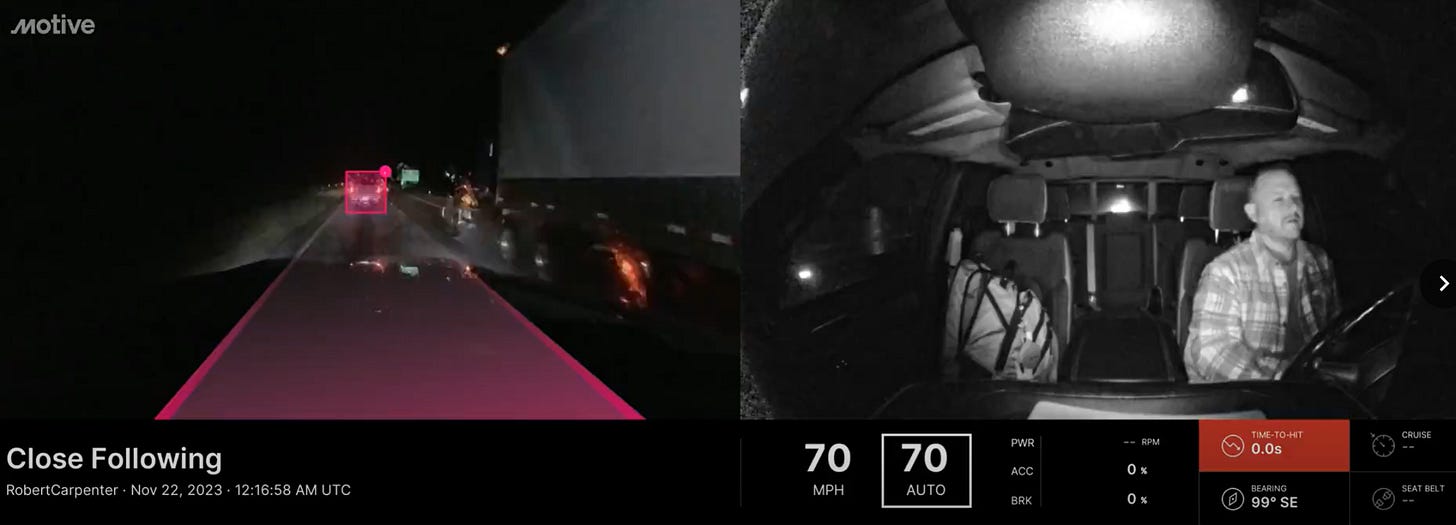Dispelling Myths and Misconceptions About Dashcams and In-Cab Visibility
In recent years, the trucking industry has seen a significant rise in the use of dashcams and in-cab visibility technologies. These tools are designed to enhance safety, improve driver behavior, and protect the driver and the company from false claims. However, despite their benefits, there's considerable misinformation and distrust surrounding these systems, particularly AI-enabled dashcams. It's time to address and dispel some common myths.
Myth 1: "Big Brother is Always Watching"
One of the most persistent myths is the belief that someone watches drivers 24/7. This idea of constant surveillance creates discomfort and distrust among drivers, who feel their every move is being monitored. However, the reality is far different.
AI-enabled dashcams are not about constant surveillance; they are about efficiency. No one has the time or resources to watch every driver around the clock—it's simply not feasible. The entire purpose of AI in these dashcams is to automate the process, allowing the camera to detect behaviors, events, or crashes that need attention. This automation ensures that only relevant footage is flagged for review, so time and labor are spent where it matters most.
Hiring someone to sit and watch dashcam footage all day is impractical and cost-prohibitive, especially in today's tight-margin environment. With many motor carriers filing for bankruptcy and closing their doors in the past three years, companies do not have the resources to waste on unnecessary labor costs.
Myth 2: "Dashcams Run All the Time"
Another misconception is that dashcams constantly record, even when the vehicle is off. While this may be true for some systems, it's not true for all. Many dashcams, particularly those integrated with ELDs, are powered through the vehicle's gateway and diagnostic port and are only active when running.
For instance, some AI-enabled dashcams, like those offered by Motive, are connected to the vehicle's ECM and require the vehicle to be powered on to request footage. If the vehicle is off, the camera is not recording. This is an important distinction, as it directly challenges the misconception that drivers are being watched even when off-duty.
Myth 3: "All Dashcams and AI Systems Are the Same"
Not all dashcams are created equal. There's a significant variation in how these systems are powered, how they operate, and the level of technology they employ. The vehicle's battery powers some dashcams and can run continuously like a CB radio. Others are integrated with the ECM and rely on the vehicle's power to operate.
The AI capabilities of these dashcams differ significantly. For example, Motive's AI dashcam uses the Ambarella CV22 processor, which features advanced image processing capabilities, including High Dynamic Range, to enhance visibility. This level of sophistication is not present in all dashcams, highlighting the importance of understanding the specific technology you buy and use.

The Real Issue: Trust
At the heart of the resistance to dashcams is often a deeper issue of trust—or the lack thereof. Many drivers don't trust the company they work for, and this distrust extends to the technology the company implements. It's less about the camera and the relationship between the driver and the company.
To bridge this gap, companies need to be transparent about how dashcam footage is used and involve drivers in discussions about the technology. Building a culture of trust where drivers feel valued and respected can go a long way in easing concerns about surveillance.
Privacy Concerns and State Regs
Privacy is another significant concern regarding in-cab visibility. Drivers often worry about violating their privacy rights, particularly in states with strict privacy laws. Companies must stay informed about state-specific regs regarding in-cab monitoring and ensure that their practices comply with these laws.
For example, some states require clear communication and driver consent before using in-cab cameras. Companies must proactively address these concerns, ensuring drivers understand their rights and the purpose of the technology.
Companies must focus on transparency, education, and communication to overcome the myths and misinformation surrounding dashcams. Providing clear information about how these systems work, their benefits, and how they protect both the driver and the company is essential. Fostering a culture of trust and respect between drivers and management can help alleviate concerns and build a more cohesive team.
In conclusion, AI-enabled dashcams are not about constant surveillance but smart, efficient monitoring that protects everyone involved. They create safer work environments and roadways and also protect the employee and the employer.


